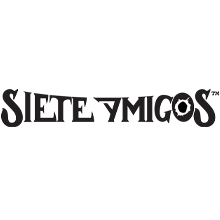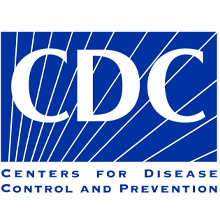Glossary
THC, CBD, CBG, cannabis, flower, concentrates, tinctures – what do these terms mean and how are they different from each other? This glossary of common terms should help.
Access Point
A medical access point is an authorized location where patients can find and purchase medical marijuana. It can also be called a pick-up location, and while medication should be fairly easy to obtain, the facility must follow state guidelines so authorization, paperwork, and a store process should be expected. In the medical cannabis community, an access point is often synonymous with a dispensary depending on individual state legislation, guidelines, and lingo.
Aroma
“Aroma” is a term used to describe the general smell and/or taste of a certain plant or flower. Because consumers’ individual definition of aromas (such as “citrus”) can differ somewhat, aroma descriptions are meant as a basic guideline.
Backcross (BX)
A backcross is a hybrid plant that has been bred with one of its parents (or a plant that is genetically similar) to create offspring that is closer to that of the original parent. This is often done to maintain rarer strains or strengthen those with desired recessive genes.
BHO
BHO stands for butane hash oil and is a potent cannabinoid made by dissolving marijuana in its plant form in a solvent (usually butane). The resulting product has very high THC levels (generally more than flowers or hashish) and is a thick, sticky oil. BHO is also referred to as honey oil, “dabs” or “dabbing,” earwax, or shatter, depending on the manufacturing method.
Bong
A large pipe, usually made of glass, that uses water to diffuse and cool the smoke as you breathe it into your lungs.
Blunt
Cannabis wrapped in a tobacco leaf cigar or cigarillo paper. The cigar may be hollowed out and then re-rolled with cannabis, and the origin of the name was coined due to the popularity of the brand Phillies Blunt Cigars. Blunts often burn longer than joints and are usually found in larger social gatherings.
Bubbler
A handheld pipe, usually made of glass, with a water reservoir at the bottom to cool and diffuse the smoke before it is inhaled.
Bud or Flower
The part of the cannabis plant that is covered in fur-like substances called trichomes which contains THC and CBD. Buds are the most used part of the cannabis plant. Buds can be smoked, vaped, used in edibles, or turned into concentrates.
Cannabidiol (CBD)
A substance in cannabis plant that may impact a person’s mood, sleep, pain perception, appetite, and the immune system. However, CBD does not cause the user to feel “high.”
Adult-use
Adult-use is a term used to describe cannabis and access to cannabis for adults (21+ in most places). The term is used to differentiate between medical use and recreational use for everyday wellness and fun.
Bud
A nickname for cannabis flower. It refers to the bulbous flowers that are dried, cured, and smoked.
Budtender
The person who serves you at a cannabis dispensary and helps guide you towards the right product.
Cannabinoids
A group of natural chemical compounds produced by the cannabis plant that give cannabis its range of physical and mental effects. THC and CBD are the two most common cannabinoids.
Cannabis
A word to describe any part of a cannabis plant including the buds or flowers, leaves, or stems. The term cannabis is also used to describe any product made from a cannabis plant. Also called marijuana, pot, weed, and various other slang terms, is a unique plant that produces psychoactive, medicinal, and therapeutic effects. This includes oils, powders, extracts, resins, or waxes. All cannabis plants contain THC and CBD.
CBD
Short for Cannabidiol, CBD is one of the primary cannabinoids found in cannabis along with THC. Unlike THC, CBD is clear-headed. Which makes it attractive to those who want the medical and therapeutic benefits of cannabis without altering their mind state.
CBG
Short for Cannabigerol, CBG is a cannabinoid found in cannabis that has gained a lot of interest recently. CBG is not as common as THC or CBD. The medical potential of CBG is thought to be helpful with inflammation, glaucoma, and even slowing cancer from spreading.
CBN
Short for Cannabinol, CBN is another cannabinoid found in cannabis that is formed as THC degrades. It shows potential as a sleep aid and to stimulate the appetite.
Clones
Clones are clippings from cannabis plants that are used as starter plants. They are identical genetic replicas from the plant they are taken from, they ensure the sex of the plant, and save time when compared to growing cannabis from seed.
Cola
Cola is the term for the main flowering cluster on a cannabis plant.
Concentrates
Products such as cannabis oils and waxes that are made by extracting cannabinoids from the cannabis plant. Concentrates usually contain very high amounts of cannabinoids, like THC. Concentrates are often vaped, dabbed, or smoked. Different names include “shatter,” “budder,” “hash or hash oil,” “kief,” “sauce,” or “resin.” Each type of concentrate varies in texture, potency, and how it is produced.
Cultivar
Another name for a cannabis strain. A plant variety that has been developed for cultivation using selective breeding is known as a cultivar. Different types of cannabis cultivars are bred to emphasize characteristics like their smell, flavor, and chemical profile.
Dab/Dabbing
A dab is the process of instantly vaporizing cannabis concentrates on a heated surface known as a nail or banger. The term dab and dabs may also refer to the raw extract itself.
Dank
A word used to describe sticky, high-quality cannabis with a strong aroma.
Dispensary
A business that is licensed by the state for the retail sale of cannabis products to adults aged 21 and older, for medical or recreational purposes.
Distillate
A thick amber oil distilled from the cannabis plant. Distillate is a purified cannabis oil that strips the plant down to its most basic compounds, generally THC or CBD, removing impurities and flavors in the process. Distilling cannabis often purifies its cannabinoid profile down to a much narrower spectrum, highlighting only THC or CBD instead of a more complete, whole-plant profile.
Edibles
An edible is any food or beverage that’s been infused with highly concentrated cannabis extract.
Eighth
Short for 1/8th ounce, a standard weight that cannabis flower is sold in. 3.5 grams = 1/8th oz
Extract
Extracts are cannabis oil products that have been concentrated using hydrocarbon solvents like butane and CO2 to produce a rich amber oil.
Flower
The common form of cannabis is the dried flower. Its resinous, dried flowers contain the highest natural concentrations of cannabinoids like THC and CBD, the psychoactive compounds that give cannabis its effects like THC and CBD. Smaller flowers are often referred to as popcorn buds (see POPCORN) and finely ground flower prepared for rolling joints is known as shake.
Flowering Time
Flowering time refers to the time it takes for a plant to produce mature flowers. Cannabis flowering times are affected by the length of daily exposure the plant receives to sun (except for the Cannabis ruderalis species, which flower automatically). When flowering times are reported for a strain, they are general estimates based on how the plants do on average in optimal conditions. Actual flowering times will vary, and it is up to the grower to decide when to harvest for maximum benefit.
Hash
Hash, short for hashish, is a term for the concentration of the sticky resin glands that have been separated and collected by hand using screens.
Heirloom
An heirloom refers to a cannabis strain that was taken from its native homeland and propagated in another geographical location.
Hemp
A plant in the same species as cannabis. Hemp plants have very low levels of THC (less than 0.3% according to law). Traditionally hemp plants have been used for their fibers for industrial purposes such as to make rope, cloth, and paper. Parts of the hemp plant can be used in cooking and baking, supplements, and topical products. In recent years, hemp plants have been used to make products that have CBD.
Hybrid
A classification of cannabis genetics that feature both indica and sativa genetics. These cultivars offer a balance between relaxing and uplifting effects.
Indica
Varieties of cannabis originating in the mountainous regions that grow with a short, bushy stature and large, thick leaves. Indica plants have a shorter flowering cycle than their sativa counterparts and are generally appreciated for their deeply relaxing effects.
Joint
A cannabis cigarette. Ground cannabis rolled in a paper that is ready to be smoked.
Kief
A collection of the plant’s resin glands, known as trichomes. Kief falls off the plant when it is ground or handled which is why many grinders feature a kief screen that can be used to collect the kief for use later.
Kush
Kush refers to a line of cannabis plants that hail from the Hindu Kush mountains in Afghanistan and Pakistan. Kush strains are indicas and have a unique aroma that has given them a large fan base. Specific breeds and plants are unique, but their aroma is generally described as “citrus or landrace refers to a local variety of cannabis that has adapted to the environment of its geographic location. This accounts for genetic variation between landrace strains, which have been crossbred to produce the cannabis variety we see today. Landrace strains are oftentimes named after their native region, like Thai, and cannabinoids that hold both their medicinal and psychoactive properties.
Liquid Live Resin
Liquid Live Resin (LLR) Crafted from premium fresh frozen flower, liquid live resin is a high-terpene, full-spectrum cannabis oil. The gentle extraction process preserves the full plant profile, delivering superior aroma, potency and flavor compared to distillates. Ready to use in vape form.
Medical use
Cannabis can be legally sold in many states to adults to treat various medical issues with a doctor’s recommendation.
Nug
Short for nugget, Nug is a slang term for cannabis flowers because the bulbous buds resemble small nuggets, like a collection of a precious mineral.
OG
OG is a term that’s now used to describe many strains, though the term originated to describe Southern California’s Ocean Grown Kush, which was quickly shortened to CBD-rich genetics. Unlike Cannabis indica, which use light cycles to flower, ruderalis is an “autoflowering” variety, meaning it flowers with age. Originating in Russia, ruderalis is a hardy plant that can survive harsh climates.
Oil
A sticky amber substance extracted from the cannabis plant that contains the resins of the plant, also called hash oil.
Papers
Short for rolling papers, papers are specialized thin paper wraps used to roll cannabis into joints and pre-rolls.
Popcorn
Popcorn is a nickname for small buds that form on the lower branches of the plant. It is typically sold at a discounted rate compared to the top-shelf buds harvested off the main branches of the plant and is a great option for people who like to roll their own joints or cook with cannabis.
Pre-rolls
Another word for a joint (see Joint), pre-rolls are pre-rolled cannabis cigarettes.
Recreational Use
Recreational use (see Adult-use) refers to cannabis consumption for pleasure. Unlike medical use, recreational use does not target specific medical ailments or symptoms though it may still produce therapeutic effects.
RSO
Short for Rick Simpson Oil, RSO, is a sticky concentrated cannabis oil that is typically consumed orally or applied directly to the skin. Cancer patient Rick Simpson used his homemade preparations to combat his own cancer which is why this type of product bears his name.
Sativa
Varieties of cannabis originating in warmer equatorial regions that grow tall and skinny in stature with long, thin leaves. Sativa strains have a longer flowering cycle than their Indica counterparts and are appreciated for their uplifting effects.
Shake
Flower is sold as buds that are commonly smoked or vaporized. Typically, flowers are sold in three varieties: fuller-sized buds, popcorn buds that are smaller in size, and shake–which is loose flower.
Strain
A strain is a unique genetic variety of cannabis. There are two main strains of cannabis plant: indica and sativa. “Hybrid” strains are produced by crossing sativa with indica. It is believed, but not scientifically confirmed, that different strains will result in different feelings of a high. Each time cannabis strains are bred together to create a new variety a new strain of cannabis is born. A few popular examples of strains are Blue Dream, Sour Diesel, and Northern Lights.
THC (Tetrahydrocannabinol)
Tetrahydrocannabinol, or THC, is the primary psychoactive compound that cannabis produces. It is known for producing euphoric effects that cause the feeling of being “high” or “stoned.”
Terpene
Natural substances that give food and scented products their unique tastes and smells. Terpenes are present in cannabis plants and can affect the taste and smell of cannabis products. Common terpenes include: Myrcene (also found in mangoes), Caryophyllene (also found in cracked pepper) Linalool (also found in lavender), and Pinene (also found in rosemary).
Tincture
Tinctures are liquid cannabis elixirs that can be taken orally or easily added to food and drinks. The active properties of the flowers can also be extracted and added to a product such as a lotion or a cream that’s applied to the skin. The medicinal properties are absorbed through the skin and can be used to treat muscle aches, long term soreness, or ailments like dry skin.
Trichome
Translucent mushroom-shaped glands on the cannabis plant that are sticky to the touch and give it its frosted white appearance. Barely visible to the human eye, these small hair-like glands produce and store the essential oils of cannabis that contain the cannabinoids and terpenes responsible for the flavors and effects of cannabis.
Topical
Cannabis topicals are products like creams and lotions that are infused with cannabis and applied directly to your skin. They are often used for sore muscles, inflammation, and localized pain management.
Vape
Cannabis vapes are a popular and simple way to consume cannabis oil easily and discreetly. Vapes are prefilled vaporizer cartridges or pods. When paired with a battery these small devices allow you to vaporize cannabis concentrates without combusting the plant. They come preloaded with various types of cannabis oil and allow you to enjoy cannabis at the push of a button. Vapes are fast-acting, discreet, easy-to-use, and make dosing simple. The user should read labels carefully as some cannabis concentrates may contain harmful additives or illegal cutting agents.
Wax
Wax is another form of concentrate.
Weed
Weed is a slang term for marijuana.







